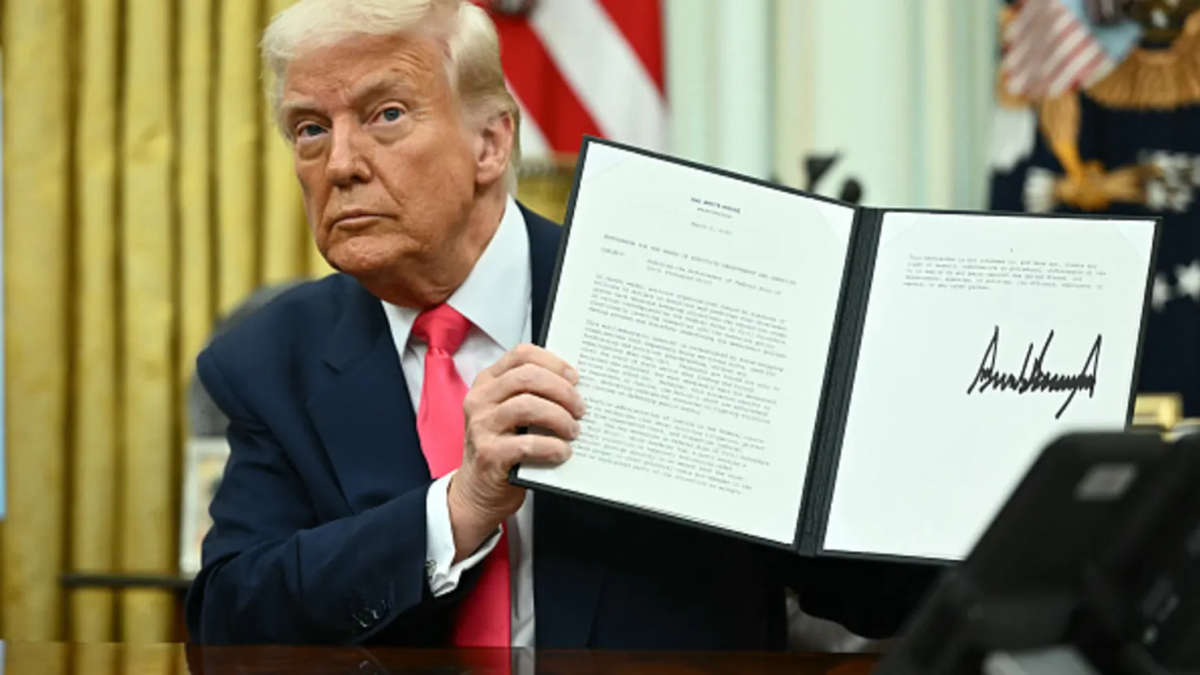At 12:01 am on March 4th 25% tariffs went into effect on Mexican and Canadian imports after a one-month delay. Trump said the day before, “There’s no room left” for Canada and Mexico to avoid the tariffs.
However, on March 6th after a drop in the stock market and complaints from the big three car makers; Trump reversed his tariffs on Canada and Mexico and delayed it once again. This prompted the CNN title by Elisabeth Buchwald, “Trump’s tariff ‘delay’ is a confusing mess”. In the first few months Trump’s theme has been unpredictability, firing government employees then rehiring them, and switching back and forth on tariffs.
We hear about tariffs a lot in politics but according to a Ipsos Consumer Tracker poll only 45% of Americans know how tariffs work. Here is what you need to know about tariffs, the effects on Americans, and Trump’s new tariffs.
“Tomorrow — tariffs 25% on Canada and 25% on Mexico. They’re going to have to have a tariff.”
–March 3rd, Trump told a reporter in The Roosevelt Room
What’s a tariff?
A tariff is a tax imposed by a government on imports from other nations. Governments do this to make imported products less appealing to consumers for many different reasons. The goal is to have the importing country make less money off of the country that imposes a tariff.
In this case there’s a 25% tax on consumer goods produced by Canada or Mexico, so if the price is 100$ you are now paying 125$. The impact of these tariffs has sparked an uncertain fear in North America of a looming trade war; but why is it important and what’s the big deal?
“Even though you’re a very smart guy, this is a very dumb thing to do.”
—Justin Trudeau(prime minister of Canada) Talking directly to Trump at a news conference on March 4th
25% increase in all products made from Canada and Mexico
Any product that you purchase that is made in Mexico or Canada will be increased by 25%. For example, the Washington Post says there will be a noticeable difference; “Americans can expect to pay an extra 20 cents per gallon of gas, [and] an additional 50 cents for each avocado”.
Furthermore wood for building houses will raise the price of housing and potentially slow down the construction of desperately needed affordable housing. The National Association of Home Builders noted that 40% of all wood products come from Canada, and 70% of Gypsum (used in plaster) and lime (used for building house foundations along with other construction) comes from Mexico.
Cracking down on Fentanyl trafficking and illegal immigration
When threatening Mexico and Canada with these tariffs in early February Trump put a delay as both countries promised to crack down on illegal immigration and Fentanyl trafficking. Mexico sent 10,000 National Guard troops to the border while Canada appointed a Fentanyl Czar (title for high-level official). One of Trump’s concerns during the first 6 weeks is the fentanyl overdose epidemic, which has caused over 50,000 lives in 2024 according to the CDC but has dropped significantly since 2022. According to law enforcement and drug policy experts Canada plays a very minimal role in fentanyl smuggling into the US, about 1%. Mexico on the other hand is known for street fentanyl flowing into the US and recently has been cracking down on it. In 2024 21,900 pounds of fentanyl was seized at the southern border compared to 43 pounds at the northern.
Trump says fentanyl trafficking is the driving factor of his new tariffs but deaths from fentanyl have been decreasing steadily, drug policy experts say. Bob McNab from Old Dominion University in Virginia says, “Tariffs are not the sharpest tool in terms of negotiating with other countries and getting them to go along with drug and border policies”.
Eliminate American trade imbalance
Balance of trade is the monetary value between the amount of imports and exports a country has. In America’s case, the imports are larger than the exports, this means Americans are buying more goods made outside of America than inside; American money is not benefiting the American economy when it goes to another nation.
To balance trade is one of Trump’s goals during his second term or to ‘make America great again’. In 2024 the US had a trade deficit of 918.4 billion dollars. The goal of the Tariffs in this case is to direct American consumers to buy American goods and push factories in tariffed nations to relocate to the US.
“We have deficits with almost every country — not every country, but almost — and we’re going to change it.”
–Trump told a reporter at Maryland’s Joint Base Andrews.
Raise American consumer prices
Tariffs raise American consumer prices and can increase inflation. Think about a 100-dollar item you buy from Mexico without a 25% tariff; Now it’s 125 dollars. Not only are you paying more, but the tariffs allow for American products or non-tariffed countries to take the opportunity to raise prices. Experts have suspected that these 25% tariffs will inevitably lead to inflation, something Trump has promised to decrease saying, “We will end inflation and make America affordable again”(Montana Trump Rally, August 9, 2024).
What’s the big deal?
Every consumer in the US is affected by these tariffs directly as products from Canada and Mexico are bought daily, to the inevitability of a rise in inflation. Yale University suggests that prices for an average American family may go up to more than 1000 dollars if tariffs are implemented. The tariffs though a trade policy are for reasons unrelated to trade; including retaliation for illegal immigration and Fentanyl trafficking. It is unclear Trump’s goals of the tariffs or the primary cause but after backlash from companies and consumers Trump has backtracked the tariffs for now.
“This is a crazy way to handle our allies, right? He’s literally reaching out to Russia at the same time that he’s putting a 25% tariff on Canadian goods.”
–Senator Amy Klobuchar from Minnesota
Editor’s Note:
Research for this article was found in NBC News, Business Insider, BBC News, Statista, The Hill, AP News, NPR, and The Wall Street Journal. The article was written between March 3, 2025, and March 11, 2025, with information from March 3, 2025, and March 4, 2025. Due to the constant changing of policy and delays in tariffs, information in this article may be out of date as Tariffs were delayed on March 6th once again.












